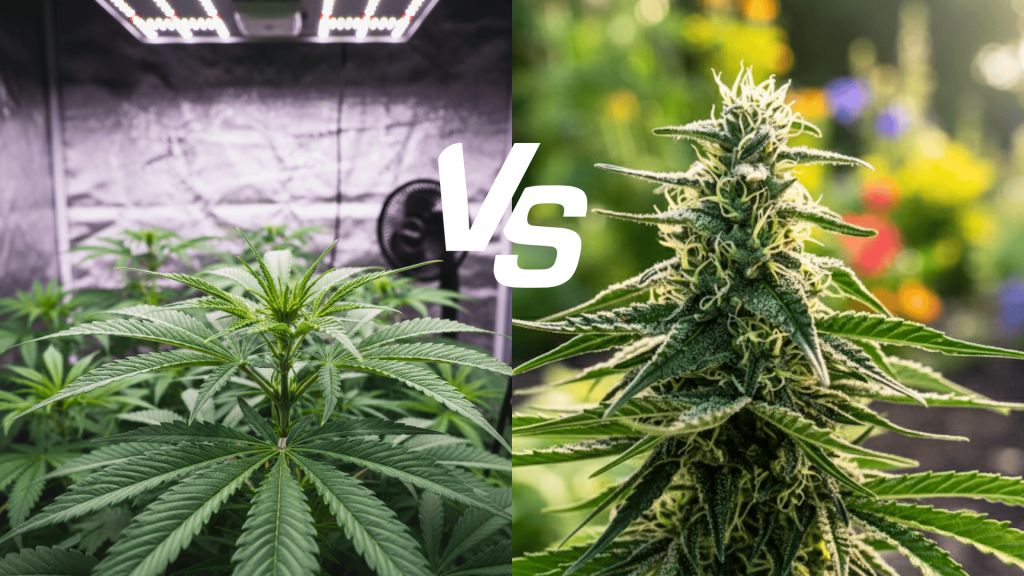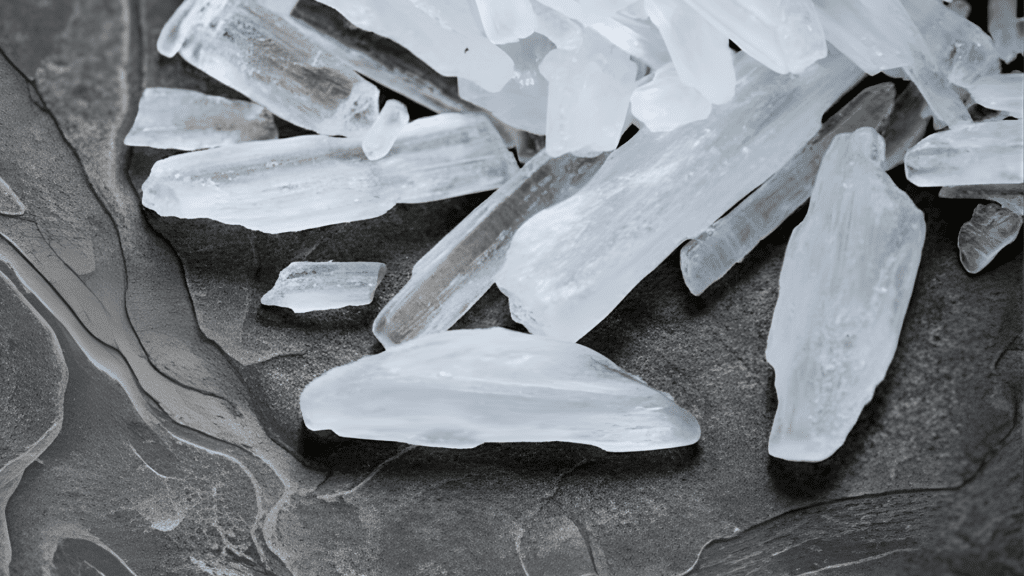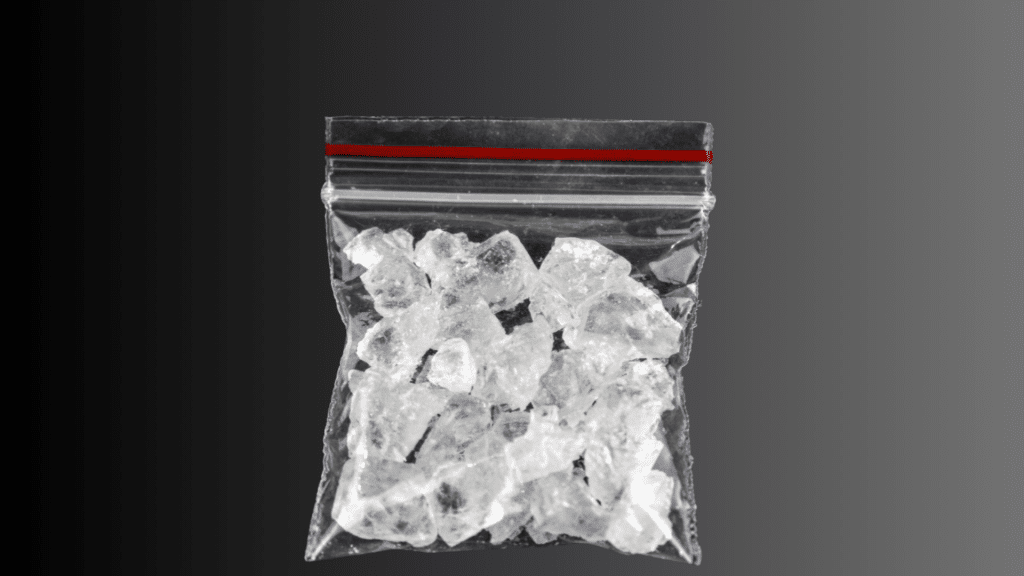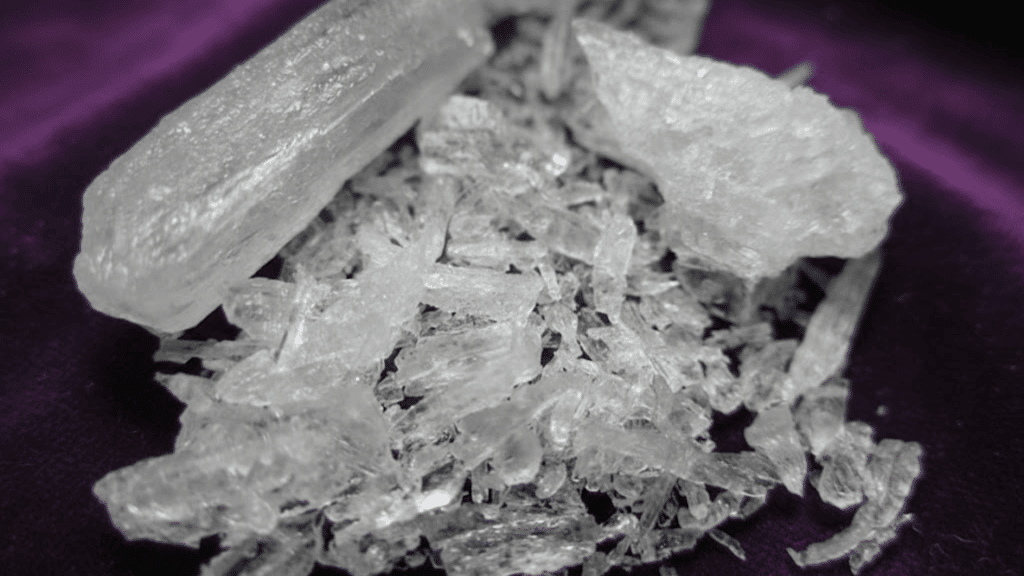I know it can be confusing when you see “indoor” and “outdoor” on a cannabis label. You might wonder what those words actually mean and how they change your experience.
In this guide, I’ll walk you through indoor vs outdoor weed in a simple way so you can feel clear about your choices.
You’ll learn how each growing style shapes the look, taste, and strength of your flower. I’ll also show you how these methods affect price and environmental impact.
By the end, you’ll be able to look at a jar and know which type of cannabis fits your taste, your budget, and your values.
What is Indoor Weed?
Indoor weed is cannabis cultivated inside a building or a climate-controlled room. Growers rely on artificial lights, ventilation, and precise feeding schedules to mimic the sun and keep pests out.
This level of control makes it possible to produce buds with a uniform look and steady potency, regardless of the season.
It’s a popular method for cultivators who want consistency, premium appearance, and the ability to harvest year-round.
Key highlights:
- Grown inside with full climate control.
- Uses artificial lights, filters, and scheduled feeding.
- Produces uniform buds with steady potency.
What is Outdoor Weed?
Outdoor weed grows under natural sunlight in open fields or large planters. Plants follow daylight cycles, absorb rainfall, and develop in living soil.
Sunlight’s full spectrum can influence terpene and cannabinoid profiles in ways artificial lights cannot.
Outdoor plants often grow taller and yield more, but depend heavily on climate and season. Lower production costs and a lighter environmental footprint make this style attractive to both growers and buyers.
Key highlights:
- Grown under natural sunlight and open air.
- Relies on daylight cycles and living soil.
- It can produce larger plants and broader terpene profiles.
- Lower production costs and lighter footprint.
How to Tell the Difference Visually Between The Two
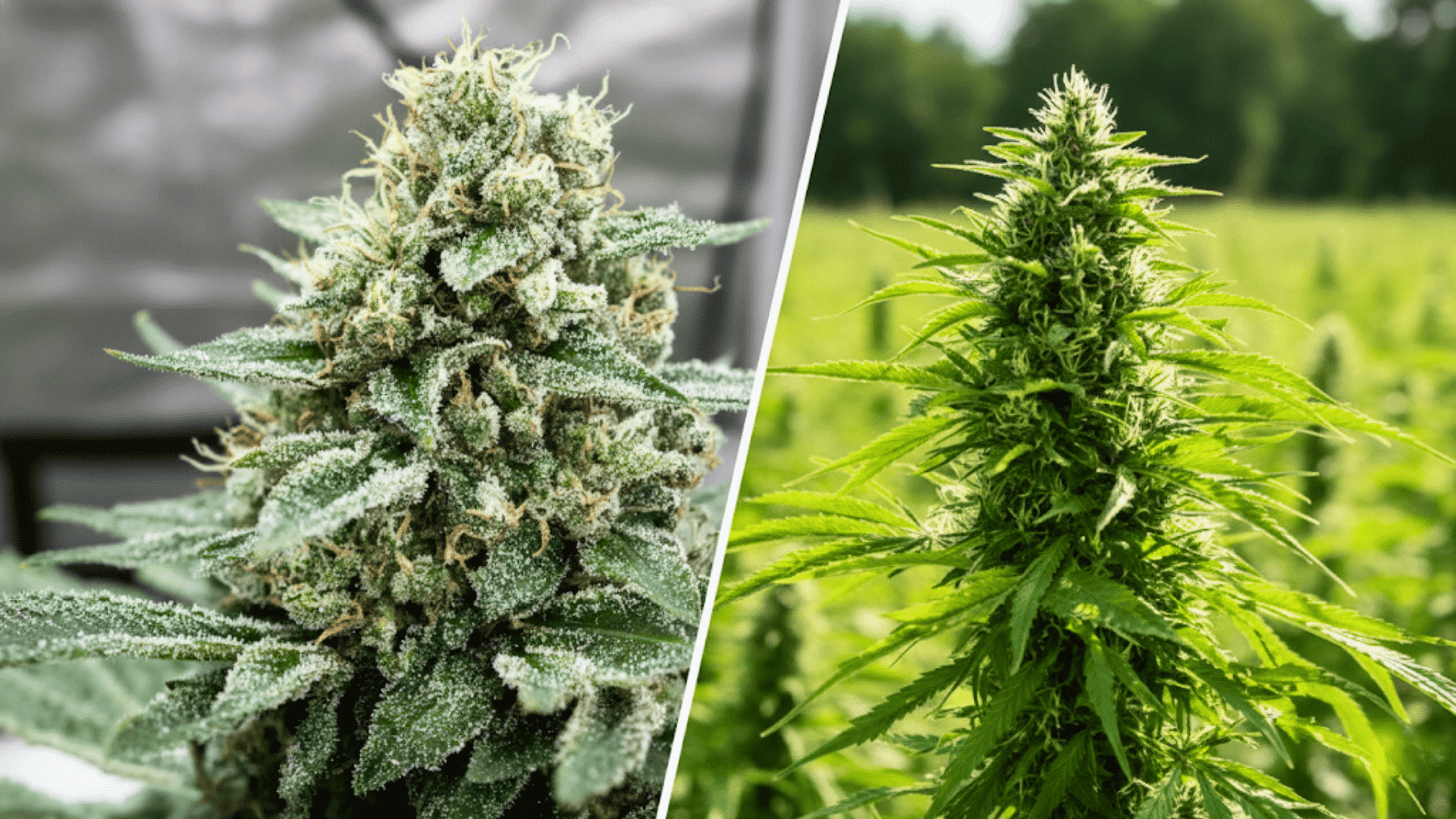
Indoor cannabis usually shows up as dense, compact buds with a bright, even green color. Heavy trichome coverage gives the flowers a frosty sparkle, and careful trimming leaves very few sugar leaves for a neat finish.
Outdoor cannabis tends to look a bit different. Buds may be larger but looser in structure, with colors ranging from deep green to sun-faded tones. Trichomes are still present, but they may appear less sparkly, and some sugar leaves often remain as a natural protection from the elements.
| Feature | Indoor Weed | Outdoor Weed |
|---|---|---|
| Bud Structure | Dense and compact | Larger but looser and airy |
| Color | Bright green, even hue | Darker green to sun-faded tones |
| Trichomes | Heavy, frosty coverage | Present but less sparkly |
| Trim | Clean, a few sugar leaves | Some sugar leaves are left for protection |
This quick view lets you see how indoor and outdoor buds differ at a glance, but it’s also a reminder that appearance alone doesn’t guarantee quality, a well-grown outdoor flower can rival indoor weed in potency and flavor.
Visual differences don’t always mean quality differences. A well-grown outdoor plant can rival indoor flower.
Indoor vs. Outdoor Weed: Potency and Chemistry
Growing conditions don’t just change how cannabis looks; they also influence potency, aroma, and the balance of cannabinoids inside each bud. Let’s look at how growing indoors versus outdoors actually changes a plant’s strength and chemistry:
Indoor Weed
Indoor-grown cannabis develops under tightly controlled conditions. Growers manage temperature, humidity, and light schedules to maximize the potential of their plants.
This fine-tuning often leads to higher THC percentages because the plants can stay in an optimal environment from seed to harvest.
Terpene production also benefits from this stability; indoor batches tend to smell and taste the same every time you buy them.
CBD content, on the other hand, is driven mainly by strain genetics rather than environment. Even indoors, CBD levels can rise or fall depending on what’s planted and how it’s bred.
Outdoor Weed
Outdoor-grown cannabis receives full-spectrum sunlight, fluctuating temperatures, and natural airflow. These variables can produce slightly lower THC on average, but also stimulate a wider range of minor cannabinoids.
Some growers believe this “stress” from nature encourages plants to create unique terpene blends. As a result, outdoor buds often have earthier or more complex aroma layers compared to their indoor counterparts.
CBD levels also vary outdoors but tend to mirror the plant’s genetics rather than the conditions.
However, sun-grown plants sometimes show a richer overall chemical fingerprint due to the natural environment.
| Compound | Indoor Average | Outdoor Average |
|---|---|---|
| THC % | 18–25% | 14–22% |
| CBD % | Varies by strain | Varies by strain |
| Terpene Notes | Clean, predictable | Rich, sun-grown diversity |
Taste and Aroma Differences
Flavor is one of the biggest differences growers and users notice between indoor and outdoor weed. Here’s how each environment shapes its taste and smell.
Indoor Weed
Indoor buds usually have a strong and predictable scent. Controlled lighting and climate help preserve terpenes, so the aroma matches the strain name on the label.
Flavors come through clean and focused, which appeals to people who want consistency and sharper notes in every jar.
Outdoor Weed
Outdoor buds develop their character under full sun and shifting weather. This natural exposure can create layered, earthy scents that mirror the soil and season in which they grew.
Many people find these profiles taste richer or more “natural.” Post-harvest handling still matters; poor curing or drying can dull the flavor of either indoor or outdoor flowers.
Pros and Cons of Indoor vs. Outdoor Weed
Each method has its perks and drawbacks. This table breaks down the biggest differences side by side:
| Feature | Indoor Weed | Outdoor Weed |
|---|---|---|
| Price | Usually higher per gram | Often lower per gram |
| Yield | Smaller, controlled | Larger, season-dependent |
| Consistency | Very consistent | Varies with the weather |
| Flavor & Potency | Often higher THC, uniform taste | Earthy, terpene-rich profiles |
| Environmental Footprint | Energy-heavy | Sunlight-based, lower energy |
| Availability | Year-round | Seasonal peaks after harvest |
| Visual Appeal | Dense, bright, frosty | Larger, looser, weather-marked |
Pick indoor for dense, steady buds; choose outdoor for natural growth and lower prices.
Environmental and Ethical Considerations
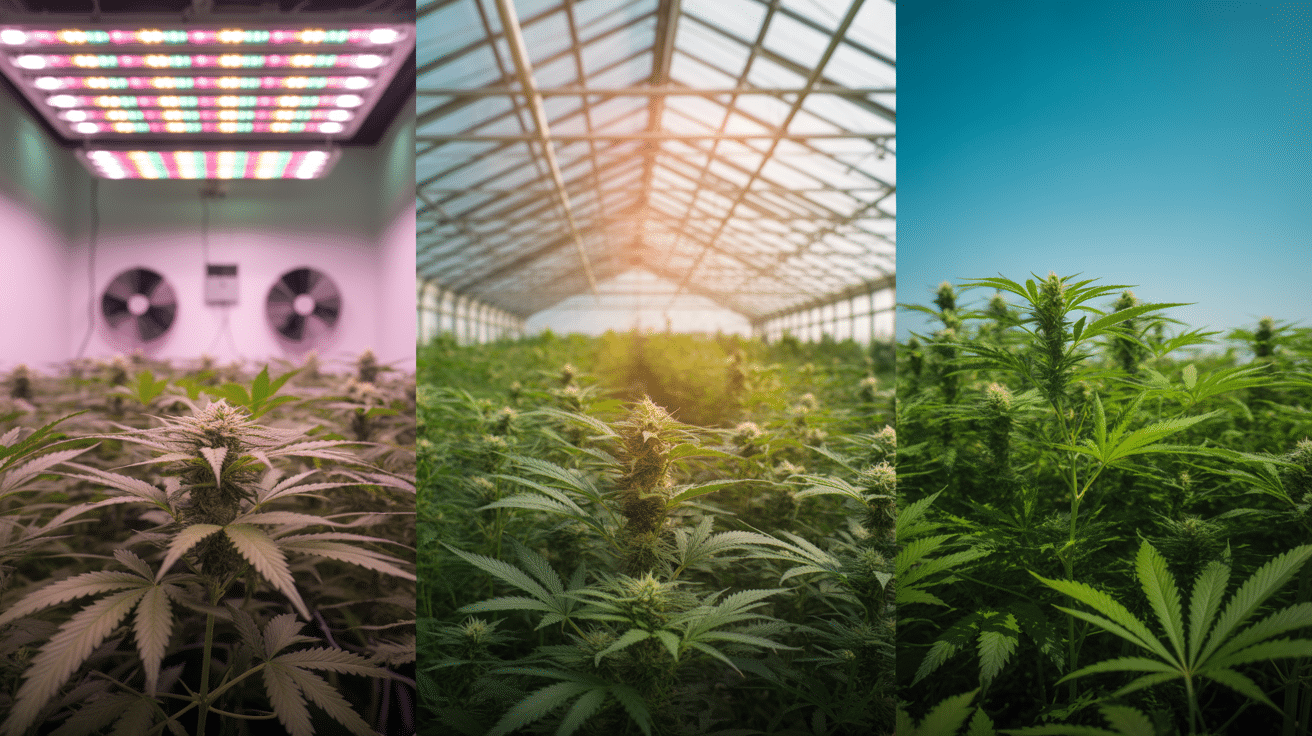
How cannabis is grown affects not only its quality but also its environmental footprint. Each method uses a different amount of energy and offers a different level of control.
1. For Indoor Growth
Indoor growing demands heavy electricity use for lights, ventilation, and climate control. Even efficient systems still create a high footprint.
This method gives maximum control over plant health and consistency, but at the cost of more resources.
2. For Outdoor Growth
Outdoor growing relies on natural sunlight and open air, which makes it far less energy-intensive.
Plants grow in living soil and under natural weather patterns, creating a lighter footprint and reducing costs. These conditions can also expose crops to pests, wind, and rain, making quality less predictable.
3. Greenhouse or Light-Dep
A greenhouse uses sunlight instead of full artificial lighting but adds partial environmental control.
Many growers install light-deprivation systems (“light-dep”), which are blackout curtains that can be pulled over the greenhouse to block sunlight at set times.
This allows growers change the plant’s day-night cycle to trigger flowering earlier and harvest more than once a year.
With a greenhouse or light-dep setup, growers:
- Use mostly free sunlight instead of costly artificial lights.
- Harvest multiple times per year instead of just one outdoor season.
- Maintain some control over pests, airflow, and temperature without the full energy use of indoor facilities.
This breakdown clearly shows the trade-offs: indoor maximizes control but uses more resources, outdoor is low-impact but riskier, and greenhouse/light-dep mixes sunlight with some control to strike a balance.
How to Choose What’s Right for You
Picking between indoor and outdoor weed becomes easier when you break it into a few steps. Follow these simple steps to determine which one best suits your needs.
Step 1: Think about potency, price, aroma, or environmental impact. This will narrow your choices before you even look at labels.
Step 2: Read the label or ask the dispensary staff for lab test results. THC and terpene numbers give a clearer picture of quality than “indoor” or “outdoor” alone.
Step 3: If you want dense buds and steady potency, indoor is usually a safe pick. If you prefer bigger yields, lower cost, or naturally sun-grown cannabis, outdoor might suit you better.
Once you know how to weigh these points, you can look past the label and focus on what really matters: the quality of the flower itself.
When to Use Indoor And Outdoor Weed
Indoor weed is best for high-potency, connoisseur-grade flower. Because growers can fine-tune every part of the environment, it also suits medical use, where consistent dosing matters.
Boutique strains that need precise conditions to express their full aroma or effect tend to thrive indoors, too.
Indoor highlights:
- High-potency, connoisseur-grade flower
- Medical use with consistent dosing
- Boutique strains need precise conditions
Outdoor weed works well for people looking for a bulk supply at a lower cost or for everyday recreational use.
It also appeals to those who prefer naturally grown cannabis and don’t mind seasonal variation in aroma or appearance.
Outdoor highlights:
- Bulk supply at a lower cost
- Every day, recreational use
- Naturally grown cannabis preference
Conclusion
I’ve shared the main differences of indoor vs outdoor weed so you can see how each growing style affects appearance, flavor, strength, and impact.
Now you know what makes indoor buds dense and steady, and how outdoor plants can offer bigger harvests with rich, sun-grown character.
You can use this information to match your needs, budget, and taste instead of relying only on the label. I like being able to help you sort through these details so your next choice feels simple and clear.
If you found this guide useful, take a moment to look through more of my posts for ideas and helpful tips on related topics!

